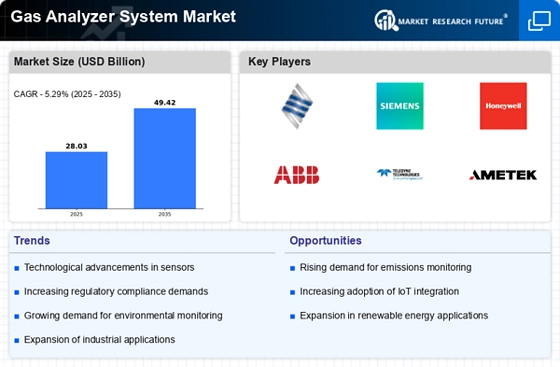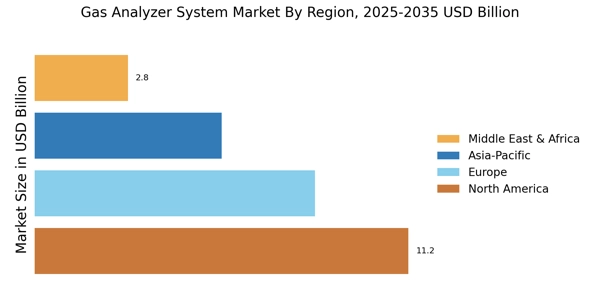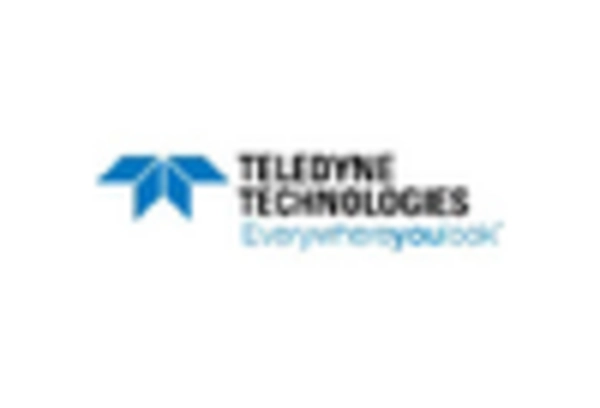Increasing Regulatory Compliance
The Gas Analyzer System Market is experiencing a surge in demand due to stringent regulatory frameworks aimed at monitoring and controlling emissions. Governments worldwide are implementing laws that necessitate accurate gas analysis to ensure compliance with environmental standards. For instance, regulations from environmental protection agencies require industries to utilize gas analyzers to measure pollutants. This trend is likely to drive the adoption of advanced gas analyzer systems, as companies seek to avoid penalties and enhance their operational efficiency. The market is projected to grow as industries invest in technologies that facilitate compliance, thereby fostering a more sustainable approach to production and emissions management.
Rising Demand for Process Optimization
In the Gas Analyzer System Market, the need for process optimization is becoming increasingly critical. Industries such as oil and gas, chemical manufacturing, and power generation are leveraging gas analyzers to enhance efficiency and reduce operational costs. By providing real-time data on gas composition, these systems enable companies to fine-tune their processes, leading to improved yield and reduced waste. The market is anticipated to expand as organizations recognize the financial benefits of integrating gas analyzers into their operations. According to industry reports, the adoption of these systems can lead to cost savings of up to 20%, making them an attractive investment for businesses aiming to optimize their processes.
Technological Innovations in Gas Analysis
The Gas Analyzer System Market is witnessing rapid technological advancements that enhance the capabilities of gas analyzers. Innovations such as miniaturization, improved sensitivity, and the integration of artificial intelligence are transforming how gas analysis is conducted. These advancements allow for more accurate and faster measurements, which are crucial for industries that require real-time monitoring. As technology continues to evolve, the market is likely to see an influx of sophisticated gas analyzers that cater to diverse applications. This trend not only improves the reliability of gas analysis but also expands the potential applications across various sectors, thereby driving market growth.
Growing Industrialization and Urbanization
The Gas Analyzer System Market is significantly influenced by the ongoing trends of industrialization and urbanization. As countries develop, there is an increase in industrial activities that generate emissions, necessitating the use of gas analyzers for monitoring air quality and compliance with environmental regulations. Urban areas, in particular, are facing challenges related to air pollution, prompting governments and industries to invest in gas analysis technologies. This trend is expected to propel the market forward, as more industries adopt gas analyzers to mitigate their environmental impact and adhere to regulatory requirements. The increasing focus on sustainable development further amplifies this demand.
Enhanced Focus on Health and Safety Standards
In the Gas Analyzer System Market, there is a heightened emphasis on health and safety standards across various sectors. Industries such as manufacturing, pharmaceuticals, and food processing are increasingly aware of the potential hazards associated with gas emissions. As a result, there is a growing demand for gas analyzers that can detect harmful gases and ensure workplace safety. Regulatory bodies are also mandating the use of gas analyzers to protect workers and the environment. This focus on health and safety is likely to drive the market, as companies invest in reliable gas analysis systems to safeguard their employees and comply with safety regulations.


















Leave a Comment